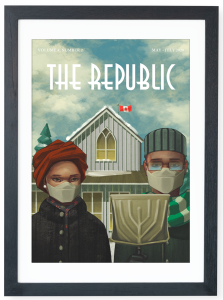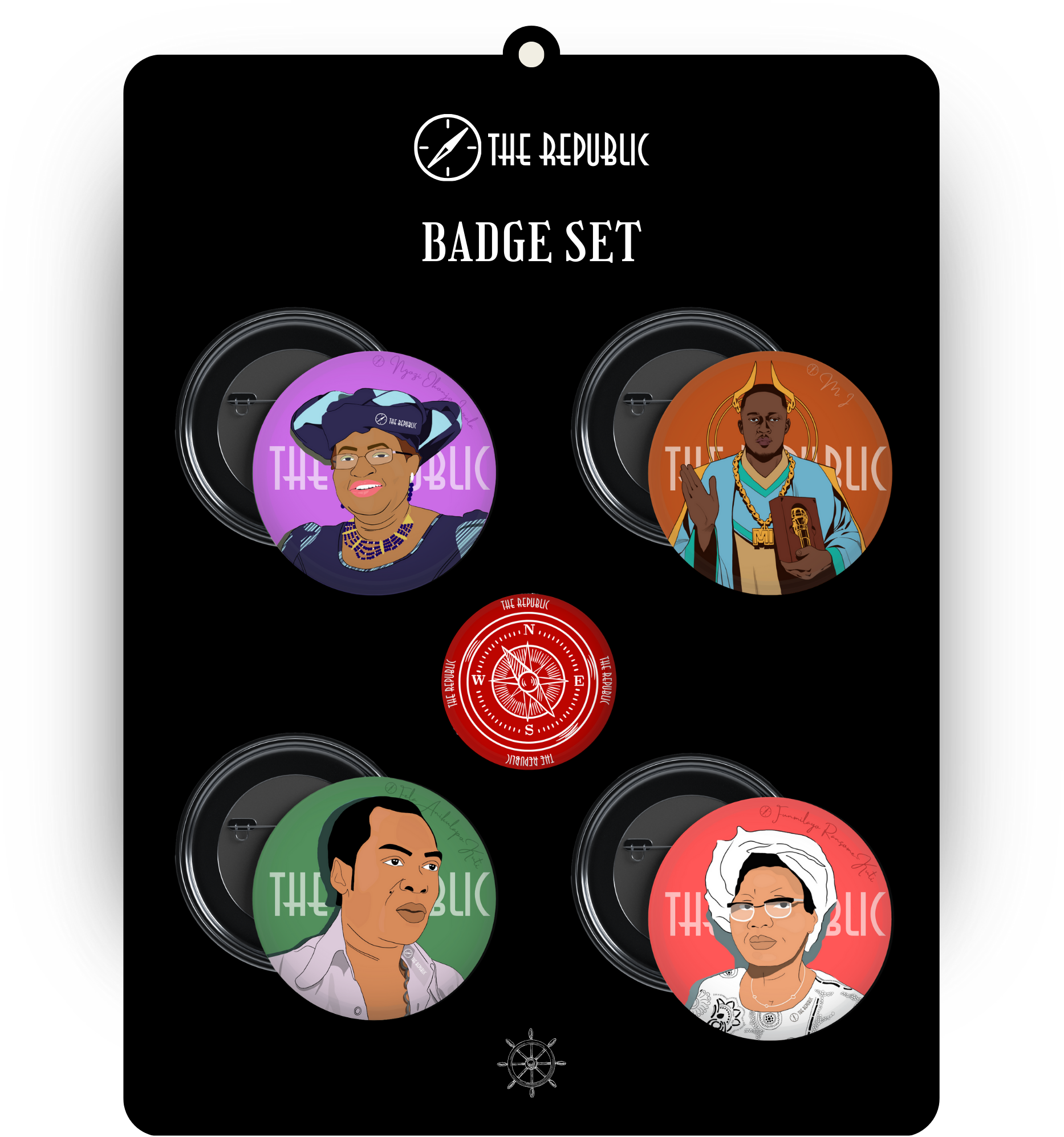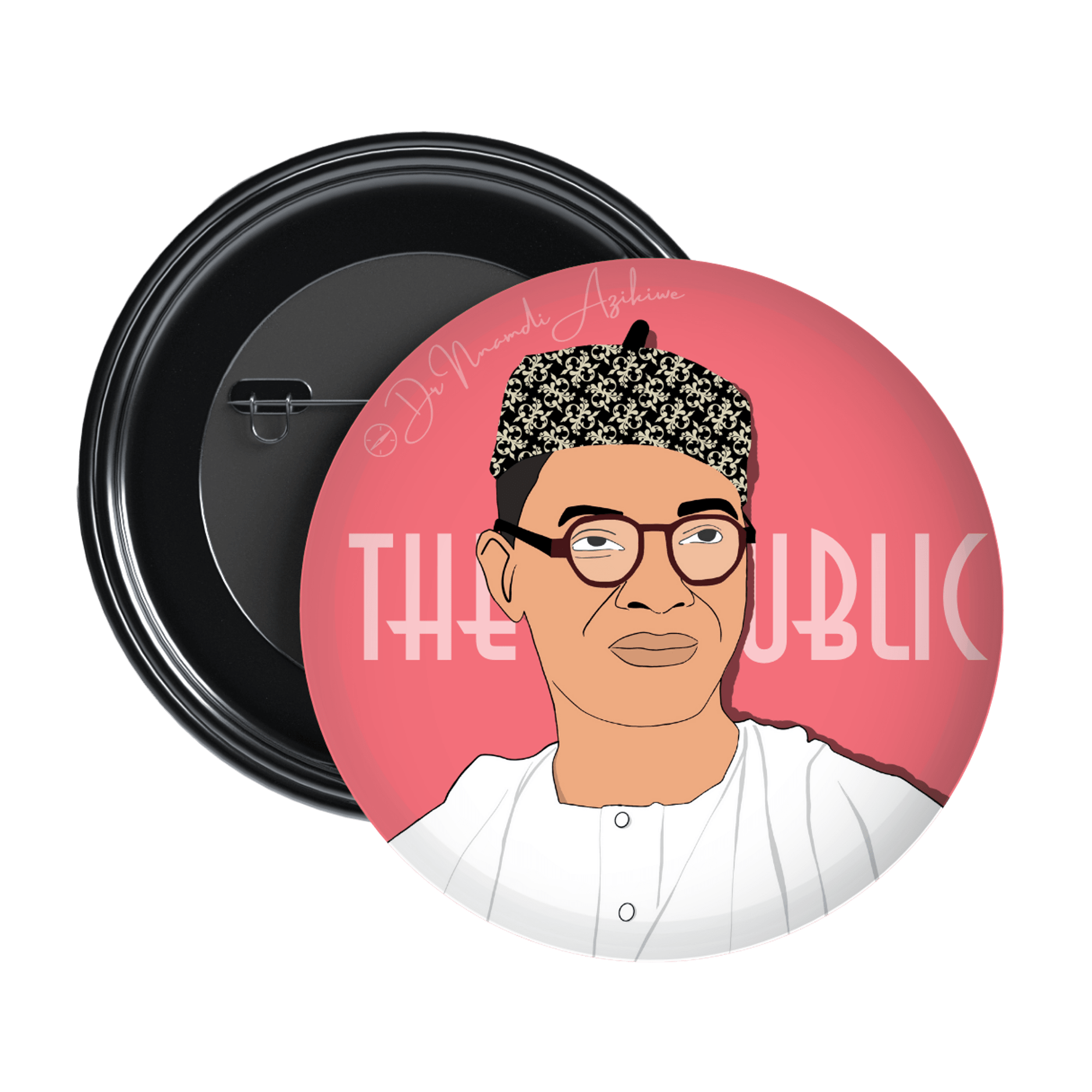
Photo by Eslah Yusuf, provided by Aisha Kabiru Mohammed. Collage by THE REPUBLIC.
the ministry of memories
Looking for Gaskiya Corporation

Photos provided by Aisha Kabiru Mohammed. Collage by THE REPUBLIC.
the ministry of memories
Looking for Gaskiya Corporation
Initially a translation bureau, Gaskiya Corporation was established in Zaria, Kaduna State, in 1931 under the Department of Education, Northern Nigeria. Dr Rupert East, the superintendent of education at the time and husband to Malama Dadasare, the first female journalist in Northern Nigeria, was the head of the bureau.
Records from the National Archives, Kaduna, referenced in 50 Years of Truth: The Story of Gaskiya Corporation 1939-1991, a book published by Gaskiya Corporation marking its 50th anniversary, stated that the translation bureau operated as a literature bureau with only three African staff and Dr East in the early years. It worked this way for about seven years before more staff joined the bureau, and it started Gaskiya Ta Fi Kwabo, a newspaper published in Hausa. By 1939, the bureau had three publications: Labaru na Da da na Yanzu (Stories of Past and the Present), Labarun Hausawa da na Makwabtansu (Historical Traditions of the Hausa people and their Traditions), and Gaskiya Ta Fi Kwabo (Truth Is More Than Money). It also organized the first competition for creative writing in Hausa.
I had written about Dadasare for Document Women in 2022. However, following a conversation with writer and owner of Tigray Coffee, Richard Ali, he suggested that I go to Gaskiya Corporation to get more information about her. This spurred my decision to go and find the corporation. My story would ultimately change direction from a search for additional information about Dadasare to digging into Gaskiya Corporation itself.
I contacted Eslah Yusuf, a photographer and content writer based in Kaduna, to accompany me in the search. Moving around old parts of Zaria with a man who spoke the Hausa language more fluently than I did made getting access to information less difficult. One of the staff members proved this when he addressed only Eslah and acted like I was not there. On a humid afternoon in May 2023, Eslah and I searched for the building that housed Northern Nigeria’s oldest printing press and publishing house. We headed to the Gaskiya area, its entrance a few metres away from Zaria City gates. On our way to the corporation, our transportation took us to the second gate of Nuhu Bahamilli Polytechnic.
The bike men did not know where Gaskiya Corporation was. We remained at the entrance for a while, asking for directions to the building. We met someone who worked at the polytechnic, and he told us that the building is opposite the main gate of the polytechnic. We took bikes to the main entrance. The entrance was on the street leading to the main road, which connected the Tudun Wada Area, home to the old Ahmadu Bello University Teaching Hospital and its Annex campus, Kongo, and PZ Area, Zaria’s commercial centre. The roads were being expanded, so the air was filled with dust, and our shoes were covered in red sand as we crossed over. We spotted the signboard of Gaskiya Corporation, but the building we stared at held a different signage: ‘Northern Nigerian Publishing Company (NNPC)’. As we approached the building, many cars were parked in front of it, and the sound of people, probably workers, talking and moving around inside and outside the building.
Some were leaving to go home or maybe back to conduct other business. We asked the security guards where we could find Gaskiya Corporation. We had set out to find the corporation, hoping to find more information about Dadasare Abdullahi, the first female journalist in Northern Nigeria. Gaskiya Corporation was the publisher of Gaskiya Ta Fi Kwabo, where Dadasare wrote a column teaching female hygiene and educating women on different issues sometime between 1939 and 1945. When we told the security guard this, he said he was unfamiliar with the name and asked us to check the building behind it. We concluded that the building with an ancient-looking tower resting on it could be the building we were looking for, and the name engraved on an old car next to it confirmed we were at the right place. We walked in and spoke to an office staff member. He did not share his name but asked us to return to see the director. On our second visit in June 2023, armed with the surety of our destination, we set out eager to gather information on the old building and its history. We met Madu Faru, the current director of Gaskiya Corporation; a spirited man who was happy to talk to us about the publishing house and his time as a journalist in Northern Nigeria. When we asked about Dadasare, he told us he had no knowledge of her and referred us to the National Archives in Kaduna and gave us a copy of 50 Years of Truth: The History of Gaskiya Corporation Zaria if we had any more inquiries about the corporation.
shop the republic



CENTRE FOR INDIGENOUS LANGUAGE PUBLISHING
In the 1936 essay ‘A First Essay in Imaginative African Literature’, Dr East noted that there was a growing number of people literate in their indigenous languages, especially Hausa in the Roman script. However, there was not much reading material and literature for the people in northern Nigeria to consume in Hausa. Most publications were produced in Latin, Arabic and English at the time of his writing the essay. In the essay, Dr East notes that the director of education in Nigeria started a scheme in 1933 to produce Hausa novels that the public could easily buy. The scheme, however, faced production and distribution problems. Northern Nigeria at the time did not have books or written text in the Hausa language that was not of a religious kind. According to Dr East:
The leaders of the jihad had destroyed the writings of their predecessors to purge the land of all memories of a more heathen past. A person capable of committing such an act of literary vandalism in the name of religion could hardly be expected to produce literature of a very imaginative kind.
Thus, the objectives of Gaskiya Corporation went from translating books from other languages to Hausa to writing books in Hausa, publishing books for schools, and encouraging local people to write books suitable for publication. With the last objective in mind, the corporation organized a writing competition in 1931 amongst the students and staff of the training college (Katsina Teachers College) in Katsina. The competition produced five books, which were later published by the corporation and became household names in northern Nigeria. These were: Gandoki by Mallam Mohammed Bello Kagara; Ruwan Bagaja by Mallam Abubakar Imam; Shehu Umar by Mallam Abubakar Tafawa Balewa; Idon Matambayi by Mallam Muhammadu Gwarzo and Jiki Magayi by John Tafida Umaru.
Besides the literary competition, Gaskiya Corporation regularly published Gaskiya Ta fi Kwabo, the newspaper’s first edition and monthly journal, with 5,000 copies printed and distributed. According to the Gaskiya Corporation handbook, this was the highest number of any Hausa book distributed at the time. Faru informed me that the printing press was true to its objective of printing schoolbooks. Ahmadu Bello, during his time as premier of northern Nigeria (1954-1966), promoted literacy and modernized traditional Qur’anic education in northern Nigeria. He set up schools in every region and used the press to print books on Astronomy, Physics, and Literature in Hausa. The institution named after him, Ahmadu Bello University, also used the Gaskiya Corporation printing press to publish books for the university before establishing its own printing press. According to Gaskiya Corporation’s Director Faru, ‘Sardauna described Zaria as a melting point of civilizations; Muslim, Christian and Animist civilizations.’
In 1953, the Northern Regional Literature Agency expanded Gaskiya Corporation’s publishing of Hausa books. It stemmed from a literacy campaign by the chief adult education officer, Mallam Ahmadu Coomassie. The agency had officers in twelve northern provinces at the time. The agency produced books in these provinces in the regions’ languages, including Fulfulde, Kanuri, Nupe, Tiv, and Yoruba. This continued while the Gaskiya Corporation published a newspaper named Nigerian Citizen.
shop the republic


GASKIYA CORPORATION AT THE TIME OF THE CIVIL WAR
The late veteran broadcaster and elder statesman, Alhaji Magaji Danbatta, joined the corporation in 1954 where he worked as a staff reporter for the Nigerian Citizen covering the entire country. According to an account I found in 50 Years of Truth: The History of Gaskiya Corporation Zaria, Alhaji Danbatta became a source of materials for about 100 foreign journalists. He wrote for the Times of London and the Daily Mail. He was later appointed as the senior broadcasting reporter at the Nigerian Citizen. He worked through the ranks and became deputy director of information at the federal ministry. This was in 1969, at the height of the Nigerian civil war. The book also stated that at that time, the Biafran side had an upper hand in propaganda, especially in Europe. To counter this, the Nigerian government sent Alhaji Danbatta to the Nigerian High Commission in London to take charge of Nigeria’s publicity and public relations in the United Kingdom and Western Europe.
A few years before, in 1965, members of the management of Gaskiya Corporation visited the famous Macmillan publishing houses. The government mandated northern Nigerian civil servants to overhaul the Gaskiya Corporation. By 1969, Macmillan Publishers entered a partnership with the publishers of the institution. When the partnership was formed, Gaskiya owned 51 per cent of the new company, the NNPC and Macmillan (UK) 49 per cent. Still, Gaskiya gave over the right of 253 titles to the new company, while Macmillan gave over only two.
shop the republic

GASKIYA CORPORATION’S RESTORATION AND LEGACY
There isn’t much information about Gaskiya Corporation’s activities from the 1970s to the 1990s and it is unclear whether newspaper production was affected by military rule during that period due to the silence in the archives regarding newspaper production. However, the organization was operational. As of 1991, Gaskiya Corporation became a limited liability company, with its shares distributed among Kaduna and Katsina state governments, New Nigerian Development Company Ltd. and Jama’atu Nasril Islam. Gaskiya Corporation’s Director Faru revealed that he joined the organization in 2016. Before then, Gaskiya Corporation was not operating. He recalled:
Before I came into Gaskiya Corporation, we had many problems, including financial issues, managerial and staff issues. The staff were on strike, the machines were not working properly, and there was no money to fix them, so it remained dormant. When I got there, I met six security men who were very old. And a production manager who had diabetes. With the help of Allah and the operations people, we have been able to revive the company. We are back in operation and can print any books of any size and colour.
I asked what he thinks Gaskiya’s legacy is in Northern Nigeria, and he said:
Sardauna was able to educate many people with the help of the Gaskiya Corporation. He printed books for primary school students in Hausa, and this helped him achieve his dream of educating people. Gaskiya Corporation housed the first vernacular newspaper and over ten newspapers in several languages. New Nigeria newspaper and Radio Kaduna were both founded in Gaskiya Corporation before they were moved to Kaduna.
In the past, Gaskiya Corporation provided information and inspired many Nigerians to create stories in their traditional language. Today, Gaskiya Corporation does not print newspapers or textbooks in Native languages. It serves, instead, as a reference point, a custodian of history. Hopefully, it will one day be restored to its former glory⎈






















